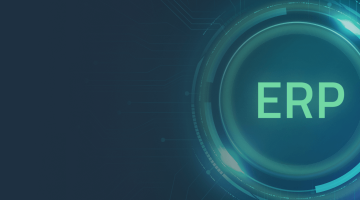

How to safely migrate data from one ERP to another
Data migration in ERP is truly a serious and tedious task that may spawn lots of workplace confusion and pitfalls. Enterprise resource planning and prior data migration are crucial yet demanding and time-consuming tasks that require much planning, meticulous preparation, and a team effort. All that responsibility is due to the company’s database being one of the most essential pieces of business welfare. Hence, data relocation should be careful, accurate, and, above all, complete.
So don’t worry; we’ll get you covered with the basics. Please keep reading to discover an ERP migration checklist and tips for its successful implementation.
When an ERP migration is inevitable
An ERP data migration is a complex process of relocating data from its primary sources into a database of a newly adopted ERP system. When your company implements a new enterprise resource planning solution, the preliminary methodical data transfer is practically inevitable.
The most common reasons for a new solution are the obsolete nature of a previous system and data structure, previous ERP support termination, or the lack of data consolidation.
The company usually stores client, product, partner, and supplier data in various formats and storage locations. ERP migration often implies moving data into a single intertwined system to ensure a more straightforward and quicker search and extraction of needed information.
Many people inside and outside of the company rely on data integrity and continuity, most of all, customers and suppliers. The older the current system is, the more unpredictable mistakes can occur due to information redundancy and storage or file glitches.
Because it is inevitable, there are particular challenges you need to address on the path of data migration. The most widespread are migration costs, information inaccuracies, miscommunication, and conflicts between offices and departments.
Due to the high prices, many decide to simplify or neglect the scrupulousness of correct data migration, resulting in duplicates and inconsistencies. Differences in categorization or lack of cooperation between departments can cause the same fate.
How to choose an ERP migration vendor
Choosing the right vendor is the first part of a winning strategy. To select a reliable migration vendor, study the market first and create a list of potential vendors. Check each vendor for compatibility issues.
Here are a few initial criteria that’ll help your evaluation process:
- Decide if the ERP product a vendor is offering fits your industry – look for a perfect or a close fit.
- Study the vendor’s cases and compare them to your particular business need – for example, the case studies of an ERP cloud migration.
- Time and budget are some of the most important aspects that should be addressed at the very beginning to prevent unnecessary misunderstandings when a vendor fits, yet you cannot afford them or agree with the timeline.
If you’re having trouble with the steps above, it might mean you haven’t sorted out your business needs. List your objectives, requirements, the state of your management, customer relationship, and future goals, then return to the vendor hunt.
Download a free white paper on how to choose a reliable software vendor.
How to build an effective ERP migration strategy
A strategic take on everything that involves handling important data is always a great idea. To make an ERP data migration strategy effective and rewarding, you should remember – simply taking all the existing data and moving it to a new location is not enough and can be a reason for subsequent information chaos.
Here’s the outlook of how it should be done.
- First, every available piece of data should be thoroughly identified and analyzed.
- Only after confirming its value and position can it be extracted and cleaned from unnecessary and archaic details.
- Then, goes mapping the information to its following location in the ERP database.
- At last, the data is migrated.
An effective strategy also depends on whether your new ERP is a cloud solution or has an on-premises location. If it’s the latter, you have to install a hardware infrastructure and hire experienced people to maintain it. In a cloud-based version, all hosting and maintenance are taken care of by your vendor.
ERP data migration best practices
Sticking to the best practices will double the chances of a positive outcome:
- Choose your priorities during migration and communicate them to all parties
- Try to analyze all existing data you have and define how it should be aligned with the new ERP database
- Be more selective and don’t migrate everything you have – you’ll end up with the same chaos, but on a larger scale
- Don’t postpone data migration until the last week of your ERP project – kick it off as early as possible
ERP migration plan: Steps to follow
Here are five steps that’ll help you properly execute your ERP migration.
Step 1. Development, preparation, and team assembly
Put together a team representing each department in charge of going through the data and cleaning it. Don’t expect that the data in your new ERP system will be optimized by itself with loads of messy input. The development stage includes deciding the future design, data management, and new process documentation.
Step 2. Data analysis and migration
In-depth structural data analysis will help prevent excessive information from making it through into the final database. Any old unnecessary bits or departmental duplicates (for example, the same data but from a different standpoint) will be edited or removed altogether.
Read more about how to create a cloud migration plan
Step 3. Training, testing, and deployment
Testing the data in the final structure will provide the clarity of a correct outcome for every group and department and confirm you’re on the right path. Then, train your employees and, if needed, your customers on how to utilize the new system.
Step 4. Evaluation
Evaluate the efficiency of your new ERP system by examining:
- Change in productivity
- Customer satisfaction
- Retention rates
- Inventory process
- New workflow
Remember to consider the adjustment period before evaluation and avoid diving into it straight after launching a new system. You can wait up to a year to see more precise results.
Step 5. Support
After the launch, support is most important. Any accidents or unexpected circumstances – and there’s a chance for the support team to prove themselves.
Learn more about DICEUS expertise in data migration.
Here’s a free white paper about “How to upgrade core banking in 12 months”
ERP data migration checklist
To ensure a diligent data migration, the ERP migration project plan should also contain these arrangements:
- Study and follow the data compliance and industry regulations
- Provide your employees with the necessary ERP training
- Choose key performance measurements
- Check the information flow to see which data needs updating
- Convert data into formats more appropriate for a new system
ERP migration tips
When executing an ERP migration project, the team needs to be methodical, not quick and chaotic. Here are a few tips:
- Start testing your data early on in the migration project
- Begin tests as long as you have the first data transferred and continue doing it regularly while the data volume increases
- Consult with the team if this time you will be migrating to a cloud-based ERP solution or it’ll be an on-premise one
- You can delegate data cleaning to special software and relieve some of your team’s duties
To migrate from one ERP to another, you have to make sure your data is reliable. Find the right vendor, prepare your business and your employees, delegate and specify essential roles for each department. To make your ERP system migration smoother, make sure to follow our tips and best practices. Or you may as well not bother with all the tech specifics at all — at DICEUS, we have years of profiled expertise in migrating ERP solutions of all shapes and sizes. Contact us to discuss your data migration project.
FAQ
What is ERP migration?
ERP migration, in simple words, is the process of moving from one software system for managing a company’s resources and processes to a new one. It’s like upgrading your company’s digital backbone. This migration involves transferring data, customizations, and configurations from the old system to the new one. The goal is to improve efficiency and functionality and keep up with technological advancements. It can be a complex and carefully planned operation to ensure a smooth transition without disrupting business operations.
How to execute an ERP migration project with MDM?
Executing an ERP migration project with MDM (Master Data Management) is like moving to a new house. You plan, clean, pack, move, test, train, settle in, and then maintain both your new ERP system and the quality of your data. This project usually involves multiple steps, among which are the following: planning, data cleanup, data mapping, data migration, testing, training, go-live, monitoring and maintenance, and ongoing MDM. If you want to learn more details about each of the steps, don’t hesitate to contact our team for free consultation.
How to improve data migration in ERP?
The data migration process in ERP is daunting. To improve it, you can adhere to the best practices like the following:
1. Plan carefully — know what data you want to move and where you will put in the new ERP.
2. Clean your data — Remove duplicates, errors, and outdated data to ensure a fresh start in the new ERP.
3. Select the appropriate tech stack — To move your data accurately and efficiently, use the right tools.
4. Involve experts — Find an experienced ERP migration partner who will guide you through the process.
5. Prepare backup plans — Create data backup plans in case something goes wrong.
Of course, there are lots of other best practices we can share with you in our free strategy session.





